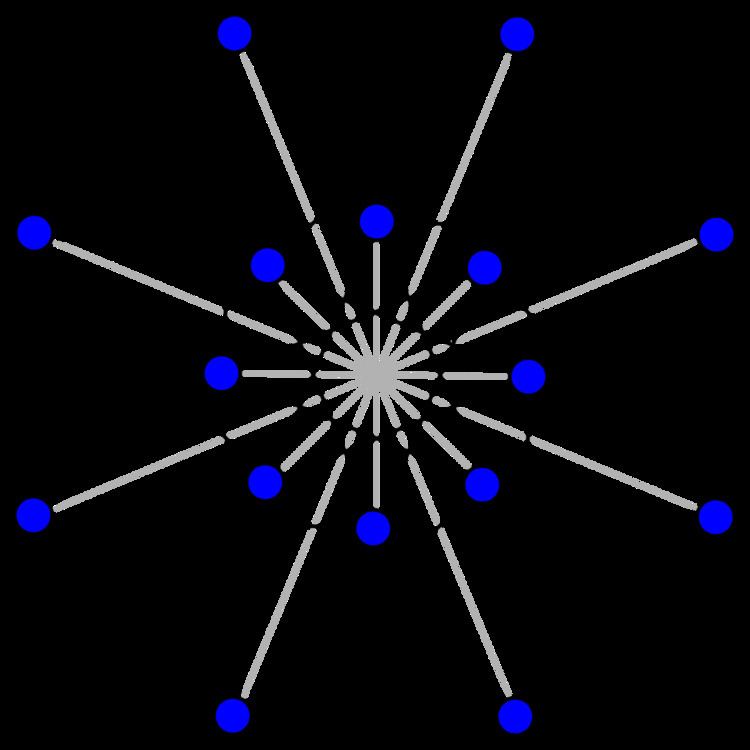Vertices 2 Diameter floor(n/2) | Edges 2n | |
 | ||
Chromatic number 2 (for even n), or 4 (when odd). Properties Regular graphHamiltonianDistance-transitive. | ||
In graph theory, a folded cube graph is an undirected graph formed from a hypercube graph by adding to it a perfect matching that connects opposite pairs of hypercube vertices.
Contents
Construction
The folded cube graph of order k (containing 2k − 1 vertices) may be formed by adding edges between opposite pairs of vertices in a hypercube graph of order k − 1. (In a hypercube with 2n vertices, a pair of vertices are opposite if the shortest path between them has length n.) It can, equivalently, be formed from a hypercube graph (also) of order k, which has twice as many vertices, by identifying together (or contracting) every opposite pair of vertices.
Properties
An order-k folded cube graph is k-regular with 2k − 1 vertices and 2k − 2k edges.
The chromatic number of the order-k folded cube graph is two when k is even (that is, in this case, the graph is bipartite) and four when k is odd. The odd girth of a folded cube of odd order is k, so for odd k greater than three the folded cube graphs provide a class of triangle-free graphs with chromatic number four and arbitrarily large odd girth. As a distance-regular graph with odd girth k and diameter (k − 1)/2, the folded cubes of odd order are examples of generalized odd graphs.
When k is odd, the bipartite double cover of the order-k folded cube is the order-k cube from which it was formed. However, when k is even, the order-k cube is a double cover but not the bipartite double cover. In this case, the folded cube is itself already bipartite. Folded cube graphs inherit from their hypercube subgraphs the property of having a Hamiltonian cycle, and from the hypercubes that double cover them the property of being a distance-transitive graph.
When k is odd, the order-k folded cube contains as a subgraph a complete binary tree with 2k − 1 nodes. However, when k is even, this is not possible, because in this case the folded cube is a bipartite graph with equal numbers of vertices on each side of the bipartition, very different from the nearly two-to-one ratio for the bipartition of a complete binary tree.
Examples
Applications
In parallel computing, folded cube graphs have been studied as a potential network topology, as an alternative to the hypercube. Compared to a hypercube, a folded cube with the same number of nodes has nearly the same vertex degree but only half the diameter. Efficient distributed algorithms (relative to those for a hypercube) are known for broadcasting information in a folded cube.
